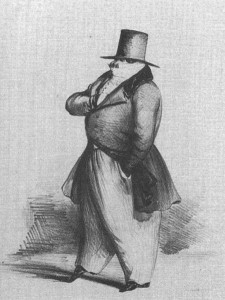Once again, again, there is a controversy driving a tremendous amount of discussion in the art world. The issue this time is a comment made by New York Times dance critic Alistair Macaulay within a review of the New York City Ballet’s current Nutcracker production. The final 100 words within his prescient 1100 word review are:
“Jenifer Ringer, as the Sugar Plum Fairy, looked as if she’d eaten one sugar plum too many; and Jared Angle, as the Cavalier, seems to have been sampling half the Sweet realm. They’re among the few City Ballet principals who dance like adults, but without adult depth or complexity. Ashley Bouder (Dewdrop) has the brilliance they lack, but also a greater and more tough-grained hardness. Even Teresa Reichlen (as Coffee), often one of the company’s freshest and most multidimensional dancers, performed with a glassiness I don’t recall. And Ms. Otranto’s conducting lacked the moment-by-moment rapport with her dancers that turns a safe performance into a tingling one.”
That’s a pretty bad review. But as you might imagine, the words that are driving the controversy are:
“Jenifer Ringer, as the Sugar Plum Fairy, looked as if she’d eaten one sugar plum too many.”
The issue isn’t new in ballet. Not long ago there was a great storm over the Kirov Ballet’s firing of one of their prima ballerinas because she had put on weight. [See this Times article, “Bolshoi Decides It’s Over Before ‘Fat Lady’ Dances” from 2003.] It’s reasonable to remember that after the Kirov firing Volchkova was hired by American Ballet Theater, a company that favors more ‘complex’ lines than the New York City Ballet, with their Balanchine style and repetoire. Many of the videos from the New York City Ballet with footage from the 1980s and 90’s bear a statement about the dangers of anorexia before the video – a footnote that does nothing to change the sickly appearance of the (actually-sick/anorexic) ballerinas featured in the videos. The length of balletic history is riddled not only with champions, but neurotics, and misanthropes, and the City Ballet in particular is growing from some issues in its recent history. Regardless, Macaulay’s 17 words have driven creation of thousands more, including stories in the Washington Post, the Huffington Post, Pointe Magazine, and even The Today Show.
In a response titled Judging the Bodies in Ballet Macaulay was nuanced, but clear:
“….Notably, the fuss has been about Ms. Ringer’s appearance. No one took issue with what might be considered a much more severe criticism, that the two danced “without adult depth or complexity.” And though I was much harder on Mr. Angle’s appearance, scarcely a reader objected. When I described Nilas Martins as “portly” in The New York Times and Mark Morris as “obese” in the Times Literary Supplement, those remarks were also greeted with silence. Fat, apparently, is not so much a feminist issue as a sexist one. Sauce for the goose? Scandal. Sauce for the gander? No problem…..
Some correspondents have argued that the body in ballet is “irrelevant.” Sorry, but the opposite is true. If you want to make your appearance irrelevant to criticism, do not choose ballet as a career. The body in ballet becomes a subject of the keenest observation and the most intense discussion. I am severe — but ballet, as dancers know, is more so.”
There it is. Having partnered women in ballet myself, I gotta say, five pounds really does make a difference. As long as ballerinas are expected to be tossed around above men’s heads, and the physical world exists, slim is gonna be in.
 Since the decline in print art criticism Macaulay is the lone remaining full time dance critic in this country. And there’s a reason for that: he’s tremendously talented. So I’m absolutely thrilled to have found a mistake in that column. In offering some examples from the past in that response he wrote, [History] “enshrines Marie Taglioni, the archetypal Romantic ballerina of the 19th century. Yet Taglioni as a student was derided by her classmates as a hunchback.'”
Since the decline in print art criticism Macaulay is the lone remaining full time dance critic in this country. And there’s a reason for that: he’s tremendously talented. So I’m absolutely thrilled to have found a mistake in that column. In offering some examples from the past in that response he wrote, [History] “enshrines Marie Taglioni, the archetypal Romantic ballerina of the 19th century. Yet Taglioni as a student was derided by her classmates as a hunchback.'”
AH HA! It was in fact Louis Veron, director of the opera, who preserved the teacher Coulon’s assesment of Marie as a hunchback in his memoir. The full review, Veron says, — and a classical moment if ever there were one — was, “when will that little hunchback ever learn to dance?” Or depending on how you translate it, “will that little hunchback ever learn to dance?” Classic. Classic, too, that despite that judgment from arguably the best teacher ever, ten years later Taglioni was known across Europe as the greatest dancer on stage.
Like good artists, good critics help us understand what we’re seeing. Even in this controversy, Macaulay has done that.
and so long as men are required to toss women above their heads, (and the physical world exists), maybe they should work on their biceps more. enjoy them organic oreos, ya sneetch. 8)
Star-bellied I may be, but any sneech at all can lift a feather over its head easier than a paper-weight… If she’s strong, the lighter woman is simply easier to partner.